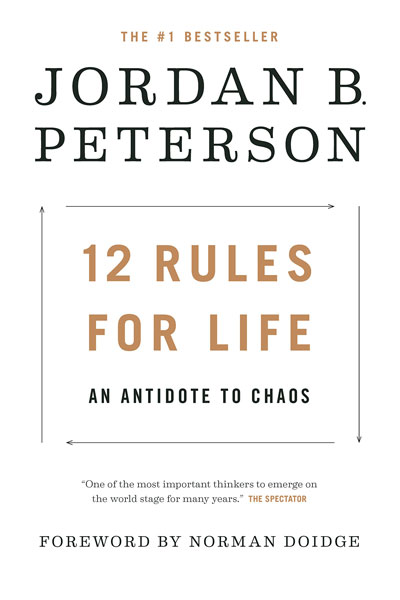

This article is an excerpt from the Shortform summary of "12 Rules for Life" by Jordan Peterson. Shortform has the world's best summaries of books you should be reading.
Like this article? Sign up for a free trial here .
In 12 Rules for Life, Jordan Peterson refers to Order and Chaos. He refers to them as Yin and Yang, as female and male. But Peterson is often vague and philosophical. What do Order and Chaos mean for you, day to day?
We’ll cover two critical concepts from 12 Rules for Life about Order and Chaos.
Chaos and Order in Balance
Chaos is unexplored territory. It’s the things and situations we don’t understand. It’s where you go when you get fired; it’s the threatening stranger on the street; it’s the scary audacious goal you’ve wanted. It’s also the realm of possibility and where new ideas form.
Order is explored territory. It’s stability and structure. It’s your plan for the next day, the comfort of tradition, the customs we use to treat each other. Yet it also can mean concentration camps, fascism, and, less extremely, personal stasis and lack of growth.
We like being in Order. We don’t like when we are forced to leave Order for Chaos, like when tragedy strikes, when you’re cheated on by your partner, or when you’re fired.
But Order isn’t enough – there are still vital things to be learned. You don’t want to be stuck unchanging in Order for all of your life.
The ideal place is to be right in the middle between Order and Chaos. To have enough Order to feel tethered, but enough Chaos to be challenged and learn new things. This is where meaning is to be found. In other words, push yourself to the limit of your ability and challenge yourself.
Making Order from Chaos
This comes from Rule 10 in 12 Rules for Life: Be Precise In Your Speech.
When you have a problem, there is often the temptation to paper it over, to think the problem will go away by itself. It’s easier to keep the peace and avoid the anxiety, despair, sadness that will come with confronting your problems. It’s easier to pretend the problem doesn’t exist, than to admit it does and the pain that accompanies it.
Maybe you hate going into work everyday. Maybe you can’t stand the way your partner chews. Maybe you stare blankly at the ceiling each morning, unable to drag yourself out of bed. You don’t know exactly what it is, but it’s more pleasant not to think too hard about it and try to get through another day.
Left unaddressed, this will gradually build until it leads to a catastrophic failure. You will regret not having acted sooner.
Specificity turns chaos into a thing that you can deal with. If you have a vague unease, you will struggle with it until you define it explicitly and give it a concrete form. Once you precisely identify the issue, you will likely realize that you were far more afraid than you should have been, and you now have a specific target to confront.
If you have a cancer somewhere in your body, wouldn’t you want to know where and what it is as soon as possible, so you can do something about it? Why don’t you treat every other problem in your life with the same urgency and clarity?
Give structure to the chaos through specific speech. If you speak carefully and precisely, you can make order from the chaos, develop a new goal, and navigate to it.
Be precise. What is the problem, exactly? What do you want, exactly? Why, exactly?
———End of Preview———

Like what you just read? Read the rest of the world's best summary of "12 Rules for Life" at Shortform . Learn the book's critical concepts in 20 minutes or less .
Here's what you'll find in our full 12 Rules for Life summary :
- Why standing up straight will make people treat you differently
- How to find meaning in your life and work
- Why you're lying to yourself without realizing it







Hello. I really appreciate your efforts of bringing thousands to the awareness of the most important books.
I’m proud of your success!